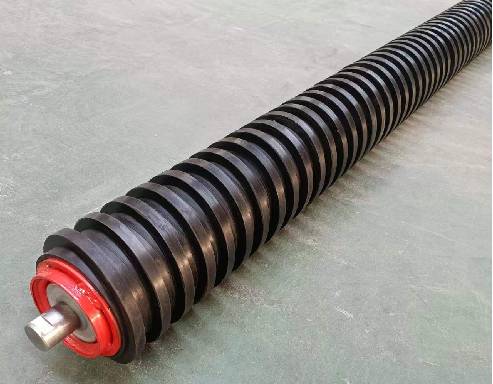 Afrikaans
Afrikaans  Albanian
Albanian  Amharic
Amharic  Arabic
Arabic  Armenian
Armenian  Azerbaijani
Azerbaijani  Basque
Basque  Belarusian
Belarusian  Bengali
Bengali  Bosnian
Bosnian  Bulgarian
Bulgarian  Catalan
Catalan  Cebuano
Cebuano  Corsican
Corsican  Croatian
Croatian  Czech
Czech  Danish
Danish  Dutch
Dutch  English
English  Esperanto
Esperanto  Estonian
Estonian  Finnish
Finnish  French
French  Frisian
Frisian  Galician
Galician  Georgian
Georgian  German
German  Greek
Greek  Gujarati
Gujarati  Haitian Creole
Haitian Creole  hausa
hausa  hawaiian
hawaiian  Hebrew
Hebrew  Hindi
Hindi  Miao
Miao  Hungarian
Hungarian  Icelandic
Icelandic  igbo
igbo  Indonesian
Indonesian  irish
irish  Italian
Italian  Japanese
Japanese  Javanese
Javanese  Kannada
Kannada  kazakh
kazakh  Khmer
Khmer  Rwandese
Rwandese  Korean
Korean  Kurdish
Kurdish  Kyrgyz
Kyrgyz  Lao
Lao  Latin
Latin  Latvian
Latvian  Lithuanian
Lithuanian  Luxembourgish
Luxembourgish  Macedonian
Macedonian  Malgashi
Malgashi  Malay
Malay  Malayalam
Malayalam  Maltese
Maltese  Maori
Maori  Marathi
Marathi  Mongolian
Mongolian  Myanmar
Myanmar  Nepali
Nepali  Norwegian
Norwegian  Norwegian
Norwegian  Occitan
Occitan  Pashto
Pashto  Persian
Persian  Polish
Polish  Portuguese
Portuguese  Punjabi
Punjabi  Romanian
Romanian  Russian
Russian  Samoan
Samoan  Scottish Gaelic
Scottish Gaelic  Serbian
Serbian  Sesotho
Sesotho  Shona
Shona  Sindhi
Sindhi  Sinhala
Sinhala  Slovak
Slovak  Slovenian
Slovenian  Somali
Somali  Spanish
Spanish  Sundanese
Sundanese  Swahili
Swahili  Swedish
Swedish  Tagalog
Tagalog  Tajik
Tajik  Tamil
Tamil  Tatar
Tatar  Telugu
Telugu  Thai
Thai  Turkish
Turkish  Turkmen
Turkmen  Ukrainian
Ukrainian  Urdu
Urdu  Uighur
Uighur  Uzbek
Uzbek  Vietnamese
Vietnamese  Welsh
Welsh  Bantu
Bantu  Yiddish
Yiddish  Yoruba
Yoruba  Zulu
Zulu troughing roller
Understanding Troughing Rollers Essential Components in Conveyor Systems
Troughing rollers are critical components in conveyor systems, particularly in industries that handle bulk materials such as mining, agriculture, and manufacturing. These rollers are specifically designed to support conveyor belts, facilitating the efficient transport of materials over various distances and terrains. Their design not only enhances the functionality of the conveyor system but also contributes to its longevity and reliability.
A troughing roller typically consists of a cylindrical component that is mounted at an angle to create a trough shape. This design ensures that the conveyor belt maintains the material load within its confines, preventing spillage and improving efficiency. The angle of the roller can vary, depending on the specific application and material being transported. Commonly, troughing angles range from 20 to 45 degrees, with the right choice crucial for optimal performance.
One of the primary benefits of using troughing rollers is improved load containment
. By creating a trough, these rollers help to keep the materials securely on the belt, reducing loss and increasing operational efficiency. This is particularly important in applications where valuable materials are being transported, as it minimizes wastage and maximizes productivity.troughing roller

Another significant advantage of troughing rollers is their ability to reduce belt wear and tear. The shape of the roller minimizes the contact area between the belt and the roller, reducing friction and promoting smoother operation. This not only extends the lifespan of the conveyor belt but also lowers maintenance costs, making it a cost-effective solution for industries that rely heavily on conveyor systems.
Troughing rollers are also designed to handle various load types—both light and heavy. This versatility makes them suitable for a wide range of applications, from handling grain and coal to transporting aggregates in construction sites. Additionally, many modern troughing rollers are built with durable materials that can withstand harsh environments, including exposure to chemicals, moisture, and extreme temperatures.
In summary, troughing rollers are a fundamental component of conveyor systems that play a pivotal role in improving material handling efficiency. Their unique design offers enhanced load containment, reduced wear on conveyor belts, and adaptability to various applications. As industries continue to evolve, the importance of effective and reliable conveyor systems will undoubtedly increase, making troughing rollers an indispensable part of the industrial landscape. Understanding their functionality and advantages can help businesses optimize their operations and achieve greater productivity.
-
Revolutionizing Conveyor Reliability with Advanced Rubber Lagging PulleysNewsJul.22,2025
-
Powering Precision and Durability with Expert Manufacturers of Conveyor ComponentsNewsJul.22,2025
-
Optimizing Conveyor Systems with Advanced Conveyor AccessoriesNewsJul.22,2025
-
Maximize Conveyor Efficiency with Quality Conveyor Idler PulleysNewsJul.22,2025
-
Future-Proof Your Conveyor System with High-Performance Polyurethane RollerNewsJul.22,2025
-
Driving Efficiency Forward with Quality Idlers and RollersNewsJul.22,2025





























